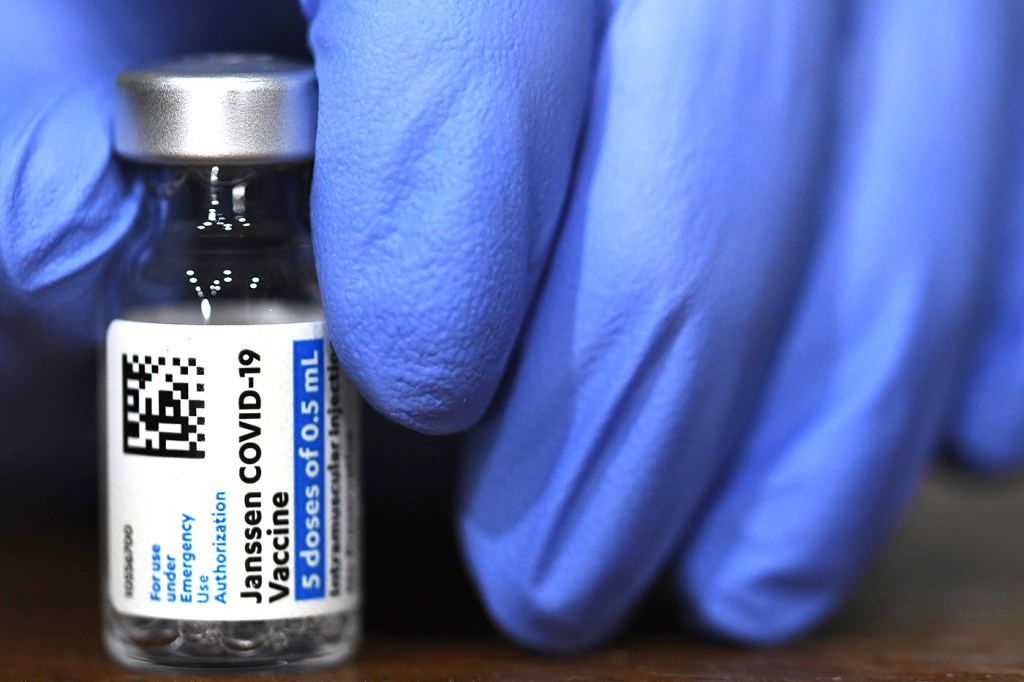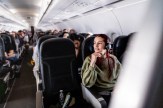After the Johnson & Johnson pause, enthusiasm for COVID-19 vaccines remains steady, U.S. survey shows

The Johnson & Johnson vaccine pause over blood clot concerns did not dampen enthusiasm among the unvaccinated as some feared it would, but a sizable portion of the U.S. population remains deeply skeptical of vaccinations in general, according to a survey by researchers from Northeastern, Harvard, Northwestern, and Rutgers.
Eagerness to get vaccinated “as soon as possible” actually rose from 31 percent before the pause to 36 percent after it was lifted, when federal health officials determined that Johnson & Johnson’s vaccine benefits outweighed the risks, researchers found.

David Lazer, university distinguished professor, holds joint appointments in the College of Social Sciences and Humanities and the Khoury College of Computer sciences. Photo by Adam Glanzman/Northeastern University.
Large majorities of respondents were both aware of the news coverage of the hold on the Johnson & Johnson vaccine (74 percent) and still indicated high enthusiasm to get vaccinated (70 percent).
The survey was taken in April in two phases—before the pause began on April 13, and then again when distribution resumed on April 23.
The national survey of nearly 19,000 U.S. residents included people of different ages, races, education levels, and political leanings. Researchers initially speculated that respondents might have had second thoughts about being vaccinated after hearing news coverage of the pause.
“But that wasn’t the case,” says David Lazer, university distinguished professor of political science and computer and information sciences at Northeastern and one of the researchers who conducted the study. “This really is the case not only of the dog that didn’t bark, but the dog that didn’t bite.”
Pfizer was the No. 1 vaccine brand of choice by 28 percent of respondents who had not yet been inoculated, followed by Moderna (21 percent), Johnson & Johnson (12 percent), and AstraZeneca (5 percent). But those figures were eclipsed by the 32 percent of what Lazer described as “hard core” respondents who said they wouldn’t choose any vaccine.
“That’s a lot of people,” says Lazer. He says that number will likely fall as some skeptical people eventually get inoculated, “but that’s still a troublingly high number at this time.”
And, it is difficult to gauge even among those who say they will get the shots if they will actually follow through. With some people reporting side effects after the second dose, others may be reluctant to get vaccinated for fear of missing work because of sickness.
“There’s still a lot of people who aren’t necessarily vaccine-resistant but who are stuck in this position where it’s logistically hard to get to a vaccination site, or there may be adverse effects on their life because they can’t take time off to get vaccinated,” Lazer says. “They could lose their jobs.”
Federal data show that 30 percent of the U.S. population has already been fully vaccinated as of late April, while 43 percent has received at least one dose. “Today, 90 percent of Americans now live within five miles of a vaccination site,” President Joe Biden told a joint session of Congress on April 29.
But Lazer says there are still “consequential” numbers of people who are indicating that they will resist getting a vaccine in addition to those who are hesitant and may never overcome the hurdles of getting vaccinated.
He predicts U.S. vaccination rates will continue to slow down over the next few months, now that those who most wanted the vaccine have received it. Inoculation rates will likely pick up again as children head back to school in the fall. Employers could also require shots as a condition for returning to the office.
“We have yet to see the coercive forces of some institutions to push people to get vaccinated or to strongly encourage them to,” Lazer says.
As more states ease back on outdoor mask restrictions and vaccinations rise, U.S. residents will feel increasingly comfortable traveling this summer, Lazer predicts, but what happens as the year progresses will tell researchers more about the pandemic’s direction.
“It’s not going to be nearly as bad this December as it was last December, but could we be having major outbreaks in different parts of the country? It seems plausible,” he says. There are several unknowns, including the possibility of variants that are triggering rising infections in other countries, and whether U.S. residents follow through with their second shots.
“Given the apparent seasonal nature of the virus, the end of the year will stress-test our vaccination efforts,” Lazer says. “And we will see different patterns emerge in different states, because higher proportions of the population of Massachusetts—the least vaccine-resistant state—will be vaccinated than, say, Alabama, one of the most vaccine-resistant states.”
For media inquiries, please contact media@northeastern.edu.





